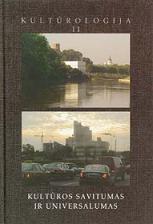ŠIUOLAIKINIS LIETUVIŲ TEATRAS: NAUJO KOMUNIKATYVUMO PAIEŠKOS
CONTEMPORARY LITHUANIAN THEATRE: A SEARCH FOR A NEW COMMUNICATIVENESS
Author(s): Rasa VasinauskaitėSubject(s): Theatre, Dance, Performing Arts
Published by: Lietuvos kultūros tyrimų
Keywords: Lithuanian theatre; communicatveness; performance; contextualization
Summary/Abstract: The essay provides a review of the communicative possibilities of contemporary theatre. The new opportunities offered by intercultural integration for the theatre and its creators require new means of communication. They determine more mobile theatrical forms, more dynamic expression and creative improvisation, which should maintain an interactive communication with spectators who speak different languages and have different cultural experience. The communicative possibilities contextualize the art of theatre; seeking such a contextualization the creators more and more often focus on new narrative forms and visual expression. The essay provides an overview of the varied forms of narration by the Lithuanian theatrical directors Eimuntas Nekrošius, Jonas Vaitkus, Oskaras Koršunovas and Gintaras Varnas that help associating their works with the requirements of the new intercultural communication. The definitions of these forms are sought in the systems of the performance as a discourse and the performance as a postmodernist discourse, which orient the creators towards a search for an architectural structure of the performance, creative mastery and artistic energy, as well as improvisations with the possibilities of parody. All these “tools” create a semantic polysemy of the performance, which stimulates the spectator ’s reception and his interpretative activity. With the help of the notions “pop taste” and “intertextuality”, attention is focused on the negative and positive effects of the intercultural integration of the play and the creator: international contacts and festivals force the creators to seek popularity in the global context simultaneously destroying the local traditions, though in this way they are risking to become outsiders of the local context and conformists of the global context. Given the limited possibilities to produce new artistic forms indefinitely, the creative mastery becomes the ability to manipulate different – artistic and reallife – contexts: the creative act is paralleled to the play with aesthetic and sociocultural signs and to variations in their semantic systems. It is namely the perception and reception of these variations that stimulates an interactive dialogue of the stage and the spectators, theatre and reality.
Journal: Kultūrologija
- Issue Year: 2004
- Issue No: 11
- Page Range: 301-312
- Page Count: 12
- Language: Lithuanian

